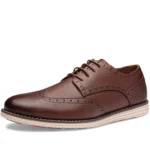A business card isn’t just a networking tool; it’s a reflection of your brand’s identity. Whether you’re a seasoned professional or a budding entrepreneur, understanding business card measurements is crucial to creating a card that leaves a lasting impression. This guide explores everything you need to know about business card measurements, including standard sizes, design tips, and common pitfalls to avoid.
What Are the Standard Business Card Measurements?
The most common business card measurements are 3.5 inches by 2 inches (or 88.9 mm by 50.8 mm). This size is widely used across the United States and Canada, ensuring that your card fits perfectly into wallets and cardholders.
However, business card sizes can vary based on regional standards:
- United Kingdom and Europe: 3.3 inches by 2.1 inches (85 mm by 55 mm)
- Japan: 3.58 inches by 2.17 inches (91 mm by 55 mm)
- Australia: 3.54 inches by 2.17 inches (90 mm by 55 mm)
When designing a card, ensure you account for bleed and trim areas, which typically add an extra 0.125 inches to each side for printing. The Ultimate Guide to Business Casual Shoes: Stylish Picks for Professionals
Why Do Business Card Measurements Matter?
Business card measurements play a significant role in the overall design and usability of the card. Here’s why:
- Professional Aesthetics: Cards with standard measurements look polished and professional.
- Practicality: Proper dimensions ensure that your card fits into cardholders, wallets, and Rolodexes.
- Brand Identity: The size and layout of your card should complement your brand’s personality, whether minimalist, bold, or creative.
International Business Card Sizes: A Quick Comparison
If you’re operating internationally, it’s essential to adapt your business card measurements to meet local expectations. Here’s a breakdown of some popular sizes:
| Region | Dimensions (inches) | Dimensions (mm) |
|---|---|---|
| United States | 3.5 x 2 | 88.9 x 50.8 |
| UK/Europe | 3.3 x 2.1 | 85 x 55 |
| Japan | 3.58 x 2.17 | 91 x 55 |
| Australia | 3.54 x 2.17 | 90 x 55 |
Understanding these variations ensures your card is appropriate for the regions you’re targeting.
Tips for Choosing the Right Business Card Measurements
Selecting the correct size for your business card depends on various factors. Consider the following tips:
- Target Audience: If your audience is primarily local, stick to the standard size for your region. For global businesses, you may need multiple designs.
- Design Complexity: Creative designs may require non-standard dimensions. For example, square cards (2.5 x 2.5 inches) or mini cards (3.0 x 1.0 inch) are gaining popularity.
- Printing Method: Ensure your printer supports custom sizes if you choose a non-standard format.
Designing a Business Card: Measurements and Margins to Remember
Creating an effective business card isn’t just about selecting the right measurements. You also need to pay attention to design elements like margins, bleed, and safe zones:
- Bleed Area: Add 0.125 inches beyond the edge of your card to ensure the design extends seamlessly after trimming.
- Trim Line: This is where the card is cut, typically aligning with the standard dimensions.
- Safe Zone: Keep all text and logos within 0.125 inches from the trim line to avoid cutting off important details.
For example, if your card’s final size is 3.5 x 2 inches, the full layout with bleed would be 3.75 x 2.25 inches. Discover the Key Features of a Thriving Business District
Common Mistakes to Avoid When Deciding Business Card Measurements
- Ignoring Bleed Margins: Failing to include bleed areas can result in cards with uneven edges.
- Overcrowding the Design: Too much information on a small card makes it look cluttered.
- Choosing Unusual Sizes Without Purpose: Non-standard sizes can be memorable, but only if they serve a functional or branding purpose.
FAQs
1. What are the most popular business card measurements?
The most popular size is 3.5 x 2 inches in the United States and Canada, with slight variations internationally.
2. Can I use custom business card measurements?
Yes, but ensure your printer supports custom sizes, and consider how practical the card will be for your audience.
3. Why is the bleed area important in business card design?
The bleed area ensures the design extends beyond the card’s edge, preventing white borders after trimming.
Using Business Card Measurements in Creative Design
While standard sizes dominate the market, non-standard designs can make your card stand out. Here are some creative options:
- Mini Cards: Compact and modern, often measuring 3.0 x 1.0 inch.
- Square Cards: Unique and trendy, typically 2.5 x 2.5 inches.
- Folded Cards: Double the standard size, allowing extra space for detailed information or designs.
Regardless of the size, ensure the content aligns with your brand’s messaging and looks visually appealing.
Conclusion:
The right business card measurements can significantly impact how your brand is perceived. By sticking to regional standards, incorporating bleed and trim areas, and considering creative alternatives, you can design a business card that not only looks professional but also resonates with your target audience.



